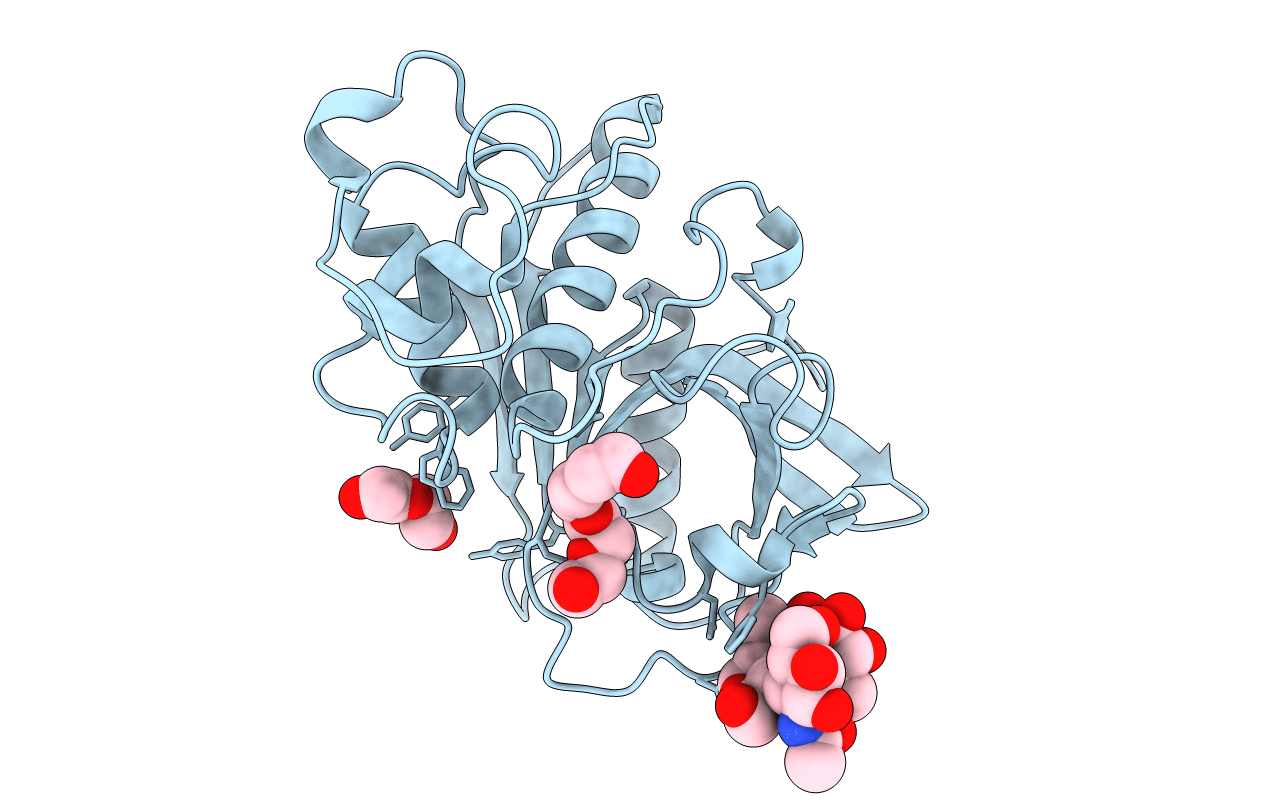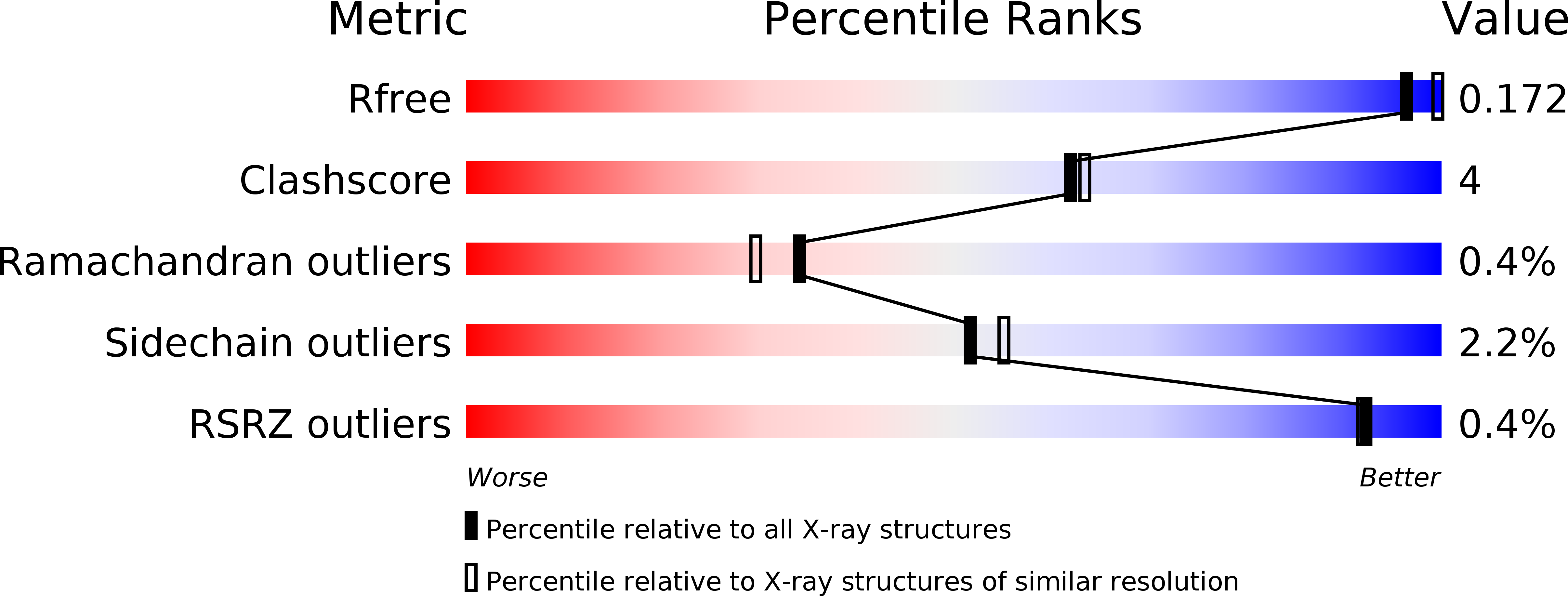
Deposition Date
2005-09-16
Release Date
2006-10-03
Last Version Date
2024-11-20
Entry Detail
PDB ID:
2B1M
Keywords:
Title:
Crystal structure of a papain-fold protein without the catalytic cysteine from seeds of Pachyrhizus erosus
Biological Source:
Source Organism:
Pachyrhizus erosus (Taxon ID: 109171)
Method Details:
Experimental Method:
Resolution:
2.00 Å
R-Value Free:
0.20
R-Value Work:
0.18
Space Group:
P 41 21 2


